|
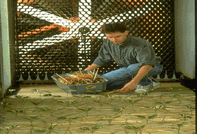
| In a wind
tunnel, technician Brent Schroeder prepares to measure how
live plants and straw residue slow windblown soil erosion.
|
|
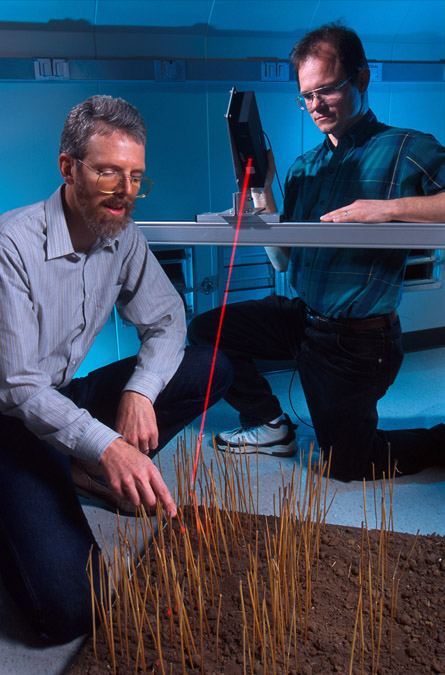
|
Researchers Fred Fox and Larry Wagner
examine the laser light pattern on standing wheat residue in the lab.
|
|
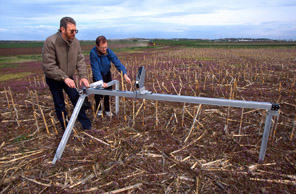
|
Researchers Fred Fox and Larry Wagner scan the corn residue that remained
standing after overwintering.
|
|
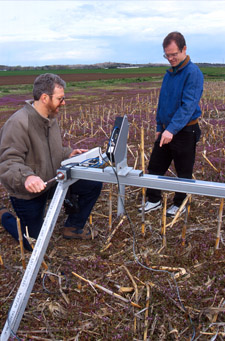
|
Researchers Fred Fox and Larry Wagner demonstrate how the laser can be used
to measure stem widths.
|
|
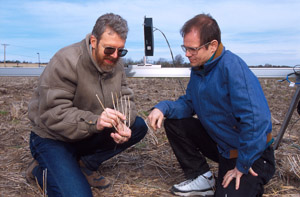
|
Researchers Fred Fox and Larry Wagner discuss the value of tillering for
increasing the number of standing stems and wind erosion protection.
|
|
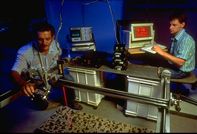
|
Technicians Wayne
Carstenson (left) and Brent Schroeder use a laser system to record the
roughness of a soil sample.
|
|
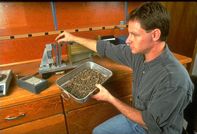
|
Technician Brent
Schroeder measures the force needed to crush soil clods or aggregates to
see how well they would resist abrasion during a windstorm. This device is
known as a "soil aggregate crushing energy meter" or SACEM.
|
|
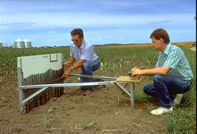
|
Measuring soil surfaces
doesn't have to be this arduous. Photographic pin meter operated by
technicians Wayne Carstenson (left) and Brent Schroeder will be replaced
by the new laser recording system.
|
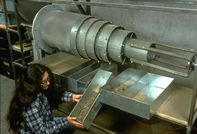
|
Both weather and tillage
affect the number and size of aggregates in soils. Here, student employee
Cheryle Nowlin uses a rotary sieve to measure changes in soil samples.
|
|
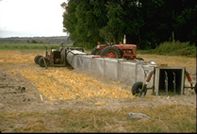
|
Portable wind tunnel.
|
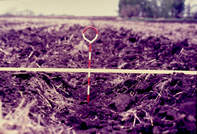 |
|
 |
|
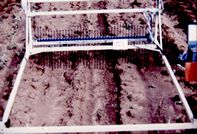 |
A pin meter used to measure soil roughness.
|
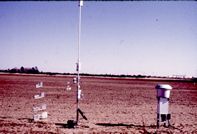 |
A dust sampling array.
|
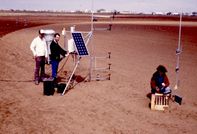 |
A dust sampling array.
|
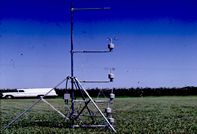 |
A dust sampling array.
|
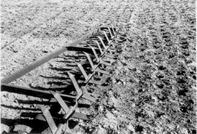 |
"Sand Fighter." An
implement used to roughen the soil surface to make it less susceptible to
wind erosion.
|
 |
This
is an early version of a rotary sieve used to measure aggregate size and
stability.
|
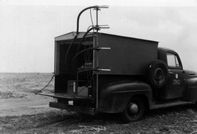 |
Dust
catching equipment near Garden City, KS.
|
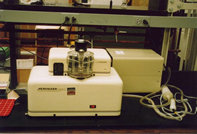 |
Aerosizer
is used for particle size distribution. The machine takes a soil sample in
power form and will give the distribution. Working size range is 1-200
micron.
|
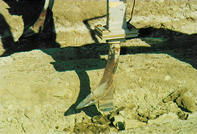 |
Tillage
equipment is tested to determine how it affects soil aggregate size
distribution, surface roughness, residue flattening, and residue burial.
|
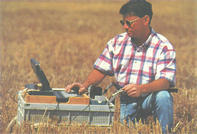 |
Measurement
of soil water content using a portable computer and cable tester. Water
content controls microbial activity and the decomposition rate of crop
residues.
|
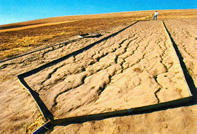 |
Focusing
on better ways to predict soil losses, agricultural engineer Donald McCool
inspects a test plot where stubble has been removed for studies on soil
erosion.
|
 |
Horizontal
crusher is used for finding the energy required to break an aggregate.
|
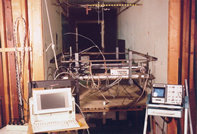 |
Laser
scanner is used to determine a surface roughness. Shown here installed in
a wind tunnel, but can also be used in the field.
|
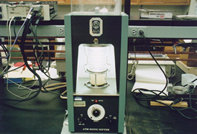 |
Sonic
sieve is used to seperate soil into different sizes. We have
5,10,15,20,30,50,75,100,150,and 250 micron sieves |
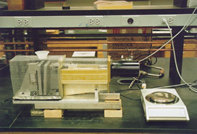 |
Vertical
crusher is used for finding the energy required to break an aggregate.
|


















